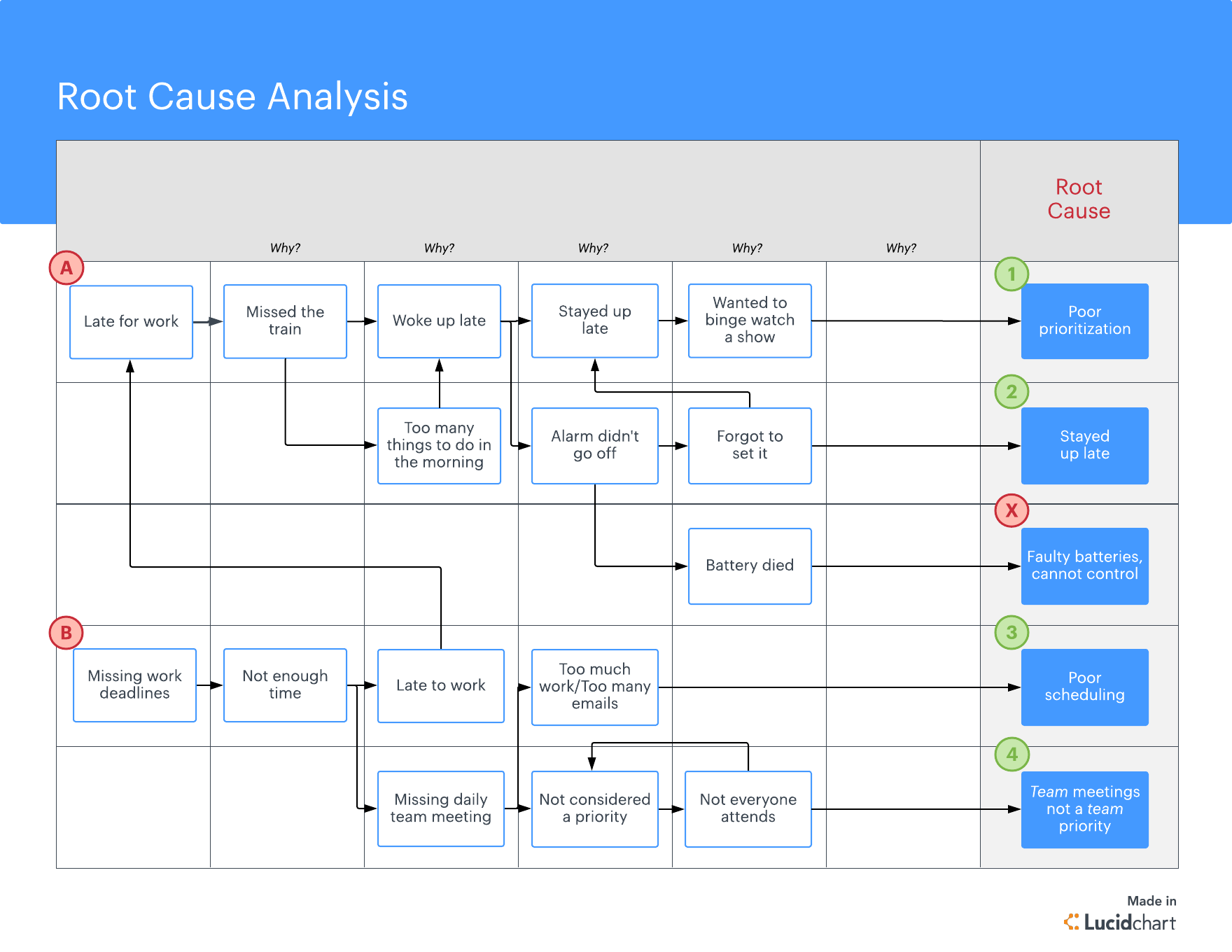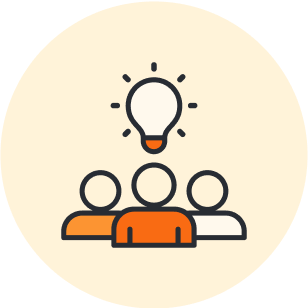Let’s face it: Things don’t always go according to plan. Systems fail, wires get crossed, and projects fall apart.
Problems are an inevitable part of life and work. They’re also an opportunity to think critically and find solutions. But knowing how to get to the root of unexpected situations or challenges can mean the difference between moving forward and spinning your wheels.
Here, we’ll break down the key elements of problem-solving, effective problem-solving approaches, and a few effective tools to help you arrive at solutions more quickly.
So, what is problem-solving?
Broadly, problem-solving is defined as the process of finding solutions to difficult or complex issues. But you already knew that. Understanding problem solving frameworks, however, requires a deeper dive.
Think about a recent problem you faced. Maybe it was an interpersonal issue. Or it could have been a major creative challenge you needed to solve for a client at work. How did you feel as you approached the issue? Stressed? Confused? Optimistic? Most importantly, which problem-solving techniques did you use to tackle the situation head-on? How did you organize thoughts to arrive at the best possible solution?
The answers to these questions say a lot about your problem-solving approach skills. But if you want to improve your problem-solving skills you’re not alone. According to NACE, nearly 90% of surveyed employers hiring college graduates are looking for evidence of problem-solving skills. If you want to advance your career, this is an area that is worth strengthening
Solve your problem-solving problem
Here’s the good news: Good problem-solving skills can be learned. By its nature, problem-solving doesn’t adhere to a clear set of do’s and don’ts—it requires flexibility, communication, and adaptation. However, most problems you face, at work or in life, can be tackled using four basic steps.
1. Define the problem. This step sounds obvious, but often, you can notice that something is amiss in a project or process without really knowing where the core problem lies. The most challenging part of the problem-solving process is uncovering where the problem originated.
2. Work to generate alternatives to address the problem directly. This should be a collaborative process to ensure you’re considering every angle of the issue.
3. Evaluate and test potential solutions to your problem. This step helps you fully understand the complexity of the issue and arrive at the best possible solution.
4. Select and implement the solution that best addresses the problem.
Following this basic four-step process will help you approach every problem you encounter with the same rigorous critical thinking process, recognize commonalities in new problems, and avoid repeating past mistakes.
In addition to these basic problem-solving skills, there are several best practices that you should incorporate. These problem-solving approaches can help you think more critically and creatively about any problem:
Dig deep
You may not feel like you have the right expertise to resolve a specific problem. Don’t let that stop you from tackling it. The best problem solvers become students of the problem at hand. Even if you don’t have particular expertise on a topic, your unique experience and perspective can lend itself to creative solutions.
Challenge the status quo
Standard problem-solving methodologies and frameworks are a good starting point. But don’t be afraid to challenge assumptions and push boundaries. Good problem-solvers find ways to apply existing best practices into innovative approaches.
Think broadly about and visualize the issue
Sometimes it’s hard to see a problem, even if it’s right in front of you. Clear answers could be buried in rows of spreadsheet data or lost in miscommunication. Use visualization as a problem-solving tool to break down problems into their core elements. Visuals can help you see bottlenecks in the context of the whole process and more clearly organize your thoughts as you define the problem.
Hypothesize, test, and try again
It might be cliche now, but there’s truth in Edison's old adage that genius is 1% inspiration and 99% perspiration. The best problem solvers ask why, test, fail, and ask why again. Whether it takes one or 1,000 iterations to solve a problem, the important part—and the part that everyone remembers—is the solution.
Consider other viewpoints
Today’s problems are more complex and difficult to solve, and they often involve multiple disciplines. They require group expertise and knowledge. Being open to others’ expertise increases your ability to be a great problem-solver. Great solutions come from integrating your ideas with those of others to find a better solution. Excellent problem solvers build networks and know how to collaborate with other people and teams. They are skilled in bringing people together and sharing knowledge and information.
4 effective problem-solving tools
As you work through the problem-solving steps, try these tools to better define the issue and find the appropriate solution.
Root cause analysis
Similar to pulling weeds from your garden, if you don’t get to the root of the problem, it’s bound to come back. A root cause analysis helps you figure out the root cause behind any disruption or problem, so you can take steps to correct the problem from recurring. The root cause analysis process involves defining the problem, collecting data, and identifying causal factors to pinpoint root causes and arrive at a solution.

5 Whys
Less structured than other, more traditional problem-solving methods, the five whys is simply what it sounds like: asking why over and over to get to the root of an obstacle or setback. This technique encourages an open dialogue that can trigger new ideas about a problem, whether done individually or with a group. Each why piggybacks off the answer to the previous why. Get started with the template below—both flowcharts and fishbone diagrams can also help you track your answers to the five whys.

Brainstorming
A meeting of the minds, a brain dump, a mind meld, a jam session. Whatever you call it, collaborative brainstorming can surface previously unseen issues, root causes, and alternative solutions. Create and share a mind map with your team members to fuel your brainstorming session.
Gap analysis
Sometimes you don’t know where the problem is until you determine where it isn’t. Gap filling helps you analyze inadequacies that are preventing you from reaching an optimized state or end goal. For example, a content gap analysis can help a content marketer determine where holes exist in messaging or the customer experience. Gap analysis is especially helpful when it comes to problem-solving because it requires you to find workable solutions. A SWOT analysis chart that looks at a problem through the lens of strengths, opportunities, opportunities, and threats can be a helpful problem solving framework as you start your analysis.

A better way to problem-solve
Beyond these practical tips and tools, there are myriad methodical and creative approaches to moving a project forward or resolving a conflict. The right approach will depend on the scope of the issue and your desired outcome.

Ready to find solutions? Effectively problem-solve with your team in Lucidchart for free.
Try nowAbout Lucidchart
Lucidchart, a cloud-based intelligent diagramming application, is a core component of Lucid Software's Visual Collaboration Suite. This intuitive, cloud-based solution empowers teams to collaborate in real-time to build flowcharts, mockups, UML diagrams, customer journey maps, and more. Lucidchart propels teams forward to build the future faster. Lucid is proud to serve top businesses around the world, including customers such as Google, GE, and NBC Universal, and 99% of the Fortune 500. Lucid partners with industry leaders, including Google, Atlassian, and Microsoft. Since its founding, Lucid has received numerous awards for its products, business, and workplace culture. For more information, visit lucidchart.com.
Related articles
How you can use creative problem solving at work
Sometimes you're faced with challenges that traditional problem solving can't fix. Creative problem solving encourages you to find new, creative ways of thinking that can help you overcome the issue at hand more quickly.
Solve issues faster with the root cause analysis process
Root cause analysis refers to any problem-solving method used to trace an issue back to its origin. Learn how to complete a root cause analysis—we've even included templates to get you started.
How to conduct a 5 whys analysis
Stumped on a business problem? Try using the 5 Whys. By urging you to look deeper into the issue, the 5 Whys analysis can help you discover the root cause of a problem and put you on track to fix it.
What is gap analysis? 4 steps and examples to use
A strong gap analysis process allows professionals to determine where their businesses are—and where they want it to be. To perform a gap analysis, follow these four simple steps.

